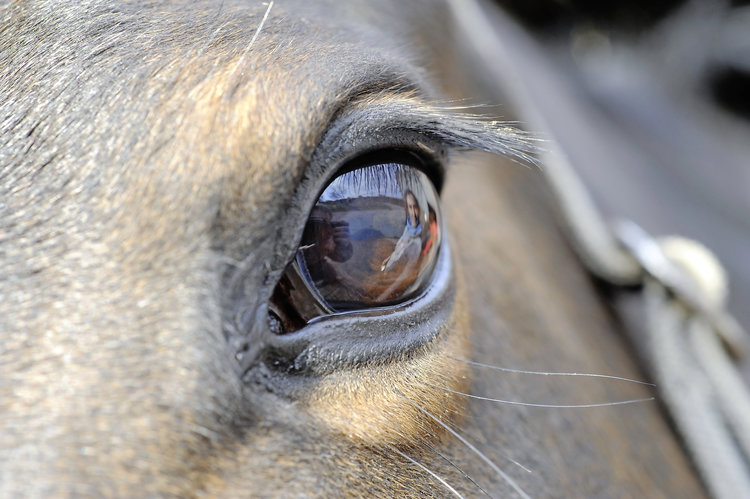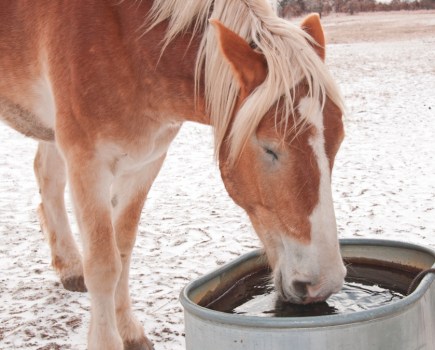It can be distressing when a horse loses his sight, yet it’s not uncommon to meet an equine who has had one eye removed.
Morven Webster MRCVS reveals how horses adapt to this life-changing event.
Although horses that lost their sight suddenly may be spooky and more unsettled to start with, if handled carefully they soon adjust to their new way of life.
Unfortunately we can’t test horse’s eyes in the same way as a human reading a chart at the optician’s.
However, assessment of the horse’s behaviour, ability to move through a maze and examination of the eyes themselves allows us to make an estimate of whether the horse can see enough to be safe, either as a companion or perhaps to be ridden, depending on his job and temperament.
How a horse will cope with eyesight loss is a big concern for owners. Some horses lose their sight gradually over a period of many years and, if kept in a familiar environment with calm companions, may manage extremely well.
Owners might not even notice their horse is almost completely blind until a routine check-up detects problems.
Helping a partially-sighted horse
- Position feed and water against a wall.
- Avoid trimming sensory hairs, such as the whiskers.
- Make the environment safe by padding door edges and using safe fencing and so on.
- Turn out in a small, level arena with a single quiet companion.
- Place a bell on the companion (or foal if a broodmare) so that your horse can keep tabs on them.
- Keep to a familiar environment and routine.
- Avoid exercising in noisy/windy conditions.
- Use signage to make other people aware that they must avoid sudden noises or movements.
- Use talking, touching and training to help your horse understand his environment.
Don’t miss the latest issue of Your Horse Magazine, jam-packed with training and veterinary advice, horse-care tips and the latest equestrian products available on shop shelves, on sale now.









